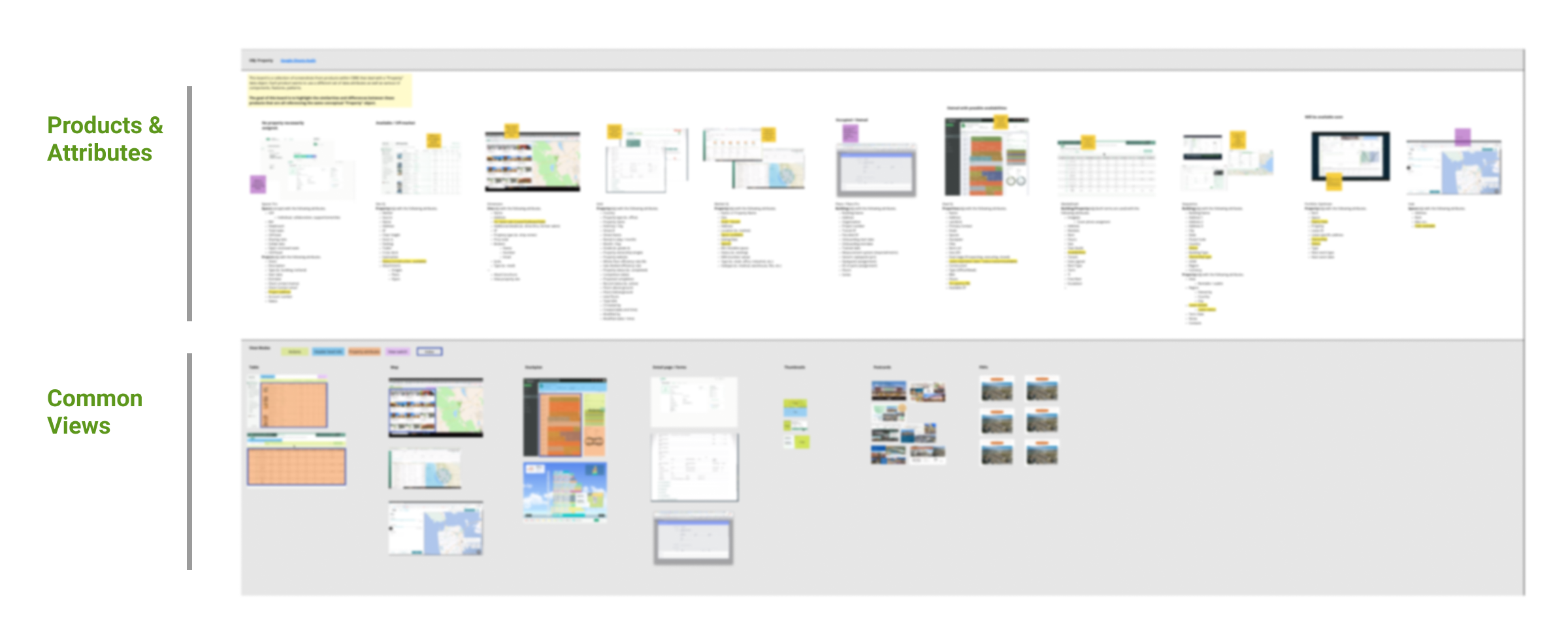CBRE Product Repository
Company
CBRE Build, CBRE
Project Background
CBRE, the world’s largest commercial real estate company, had a strong desire to integrate their products and services with each other, but the current state of the product/service landscape was a hodgepodge of differing legacy patterns, styles, and content.
Goal
To create a resource by which our teams could identify opportunities for integration and unification.
The Problem
Product teams were spending lots of time recreating similar solutions for their own products. This resulted in inconsistencies across product UI/UX, development, and even in terminology used.
Products could not easily integrate with each other.
Inconsistent customer experience
Gathering Product Screenshots
This problem would not be solved overnight, or over a quarter. But, I wanted to create a resource to help our team work toward unification over time. My solution was to create a Product Repository. This would house images, videos and links for our many products.
The repository took on two forms: a Google Drive folder and a collaborative Miro board, shown below. Both resources would be internally open-source, allowing anyone in the company to access, edit and update.
Above: Product Repository Miro board (Image is purposely blurred for privacy.)
Immediate Benefits
For the design team, seeing all these screenshots come together made it easy for us to quickly identify commonly used patterns and components, resulting in a prioritized backlog of most useful UI components and patterns to be worked on.
The Google Drive repository became a great resource for inspiration, research and onboarding and was kept regularly updated by team members with images, videos and links.
Was useful in contributing to our shared glossary project unofficially titled Project Webster. Where myself and a fellow designer and researcher worked to create a shared company glossary. This was also used for onboarding, but we felt could be used in the future to highlight differences in terminology used in our products and services.
Taking It Further with Data Objects
Beyond common components and patterns, I knew that if our products wanted to integrate, we would want to start thinking about reusable data objects.
What I found was that every product had the mention of “Property” and often “user”/”client” or “company”.) Focusing on one object at a time, I examined about a dozen products and analyzed their usage of a property object.
Using the shared product repository Miro board, I identified different views for the property object. This could aid our design team in the future to create a small set of reusable template views for properties. For example, table, map, stackplan, thumbnail, etc.
Above: Identifying common views of the property object. (Image is purposely blurred for privacy.)
I then took it a step further and created a spreadsheet which listed each product, the terminology used for “property”, and which attributes were shared or unique. This deliverable served as a reference tool, which made it obvious the similarities and differences between our products. This work was later used by a new team focused on creating reusable data objects.
Above: Blurred screenshot of property audit spreadsheet
Summary of Impacts
The creation of the product repository had the following impacts…
Identification of high priority UI components and patterns to be created for our design system, Blocks.
Aided in development of product glossary
Became a useful onboarding/research tool.
The subsequent work with the property object contributed to CBRE’s new data initiative.
These initiatives combined are all steps toward a unified product and service landscape where each person and product speaks the same language, can seamlessly hand-off data from one product/service to the next, and the UI/UX is a familiar one that is also recognized as being distinctly CBRE.




